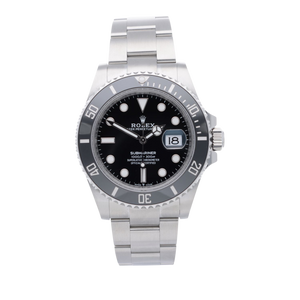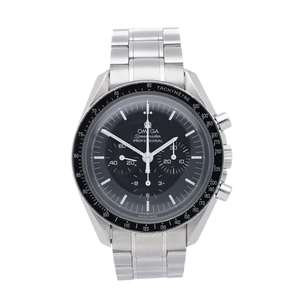Tips and Tricks: Polishing and Removing Scratches from Watches
For watches that aren't eking out their existence safely stored in their cases or displayed in display cases, but are actually in use, the odd scratch is almost inevitable. Just one clumsy touch of the wrist, and it's done. In many cases, it's possible to combat the scratches with a polish like the one we offer at Horando . The following section explains what to look for and whether polishing a watch is even considered useful.
Note: Polishing removes material
First of all, it's important to know that every polish removes material from the surface of the watch. In other words, polishing makes the watch slightly lighter and the material slightly thinner. The amount of removal required depends largely on the depth of the scratch. If you polish your watch frequently, or have it polished, you should also expect a visually noticeable deformation of the case. Therefore, it's important to consider whether the watch can withstand further polishing or whether it's better to live with the occasional scratch on the case.
DIY polish: Polish light scratches out of your watch yourself
DIY polishing is not recommended for very expensive luxury watches or those with deep scratches. Instead, the watch should be entrusted to an expert who can professionally polish it with a machine. Unlike when treating minor scratches with polishing cloths, a lot can go wrong with machine polishing. For this reason, we strongly advise against attempting to do it yourself with sandpaper – it's worth investing in the work of a professional.
Heavily scratched watches belong in expert hands
DIY polishing is not recommended for very expensive luxury watches or those with deep scratches. Instead, the watch should be entrusted to an expert who can professionally polish it with a machine. Unlike when treating minor scratches with polishing cloths, a lot can go wrong with machine polishing. For this reason, we strongly advise against attempting to do it yourself with sandpaper – it's worth investing in the work of a professional.
Don'ts: Avoidable mistakes when polishing watches
Particular care is required with watches with shiny and satin-finished surfaces. Polishing will ruin the matte elements in no time. Whether by machine or with a cloth, the satin-finished surfaces must be carefully masked or precisely removed. Polishing gold-plated watches is also difficult. The gold plating is usually applied so thinly that polishing quickly reveals the underlying material, and a visually desirable result cannot be expected.
Which watch glasses can be polished?
What should you do if the scratches aren't on the case or strap, but on the watch crystal? It depends heavily on the material: While Plexiglas can be easily polished using white polishing paste and cotton pads, polishing hard glass, such as mineral or sapphire crystal, is usually unsuccessful. While there are some more serious options for addressing scratches in the crystal, these are so complex and costly that it's usually more sensible to simply have the crystal replaced.
Decision-making aid: Polishing – yes, please or no, thank you?
Ultimately, every proud watch owner must decide for themselves whether they want to polish their watch (or have it polished). It's important to remember that polishing will be considered a deviation from the original condition when selling the watch, thus reducing its value. However, if selling is out of the question and you consider the scratches to be a serious flaw, there's nothing stopping you from polishing it. Anyone unsure whether polishing is the best option for their individual case should seek professional advice and consider the matter carefully, rather than acting hastily.















